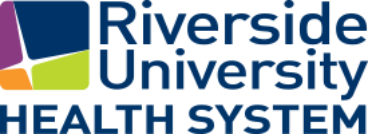Stroke
What is a Stroke?
A stroke is a medical emergency that occurs when blood flow to the brain is interrupted either by a blockage or a rupture and brain tissue is damaged as a result.
Nerve cells begin to die within minutes of a stroke because they are deprived of oxygen that would normally be carried by brain vessels. When these nerve cells die, the parts of the body they control cannot function either.
Stroke is the fifth leading cause of death and a leading cause of disability in the United States, but the damage strokes cause can be reduced by recognizing the symptoms and acting quickly.
The American Stroke Association estimates that up to 80 percent of strokes may be prevented.
Types of Stroke
Ischemic Stroke: An Ischemic Stroke is one that is caused by a blocked artery. This is the most common type of stroke and can sometimes be treated with clot-busting drugs.
Hemorrhagic Stroke: A Hemorrhagic Stroke is caused by bleeding into the brain tissue. This stroke is caused by a ruptured blood vessel.
Transient Ischemic Attack: A Transient Ischemic Attack (TIA), also called a “mini stroke,” occurs when a blood clot blocks an artery for a short time. The symptoms of a TIA are like the warning signs of a stroke, but they usually last only a few minutes. About 10 percent of strokes are preceded by TIAs, making TIAs a strong indicator of stroke risk. TIAs are a medical emergency and should be treated immediately.
Warning Signs of a Stroke
Signs of a stroke include:
- Sudden weakness or numbness of the face, arm or leg, especially on one side of the body
- Sudden confusion – difficulty speaking or understanding
- Sudden trouble seeing from one or both eyes
- Sudden dizziness
- Sudden trouble walking, loss of balance or loss of coordination
- Sudden, severe headache with no known cause
Those who recognize any of these symptoms in themselves or others, should remember the acronym "BE FAST" and call 911 immediately.
Balance: Look for sudden loss of balance, trouble walking.
Eyes: Look for sudden visual changes in one or both eyes.
Face: Ask the person to smile. If the face is droopy on one side, that is a sign of a stroke.
Arm: Instruct the person to raise both arms. If one arm drifts down, that is a sign of a stroke.
Speech: Encourage the person to say a simple phrase and listen for slurred speech or speech that can’t be understood.
Time. Diagnosis and treatment of an ischemic stroke must be within three hours of the time of onset of symptoms. That’s why it is so important to call 911 right away.
Risk Factors for Stroke
Certain risk factors make it more likely that you will develop artery disease and have a stroke. Some risk factors for stroke can be controlled, while others can't.
Some of the major risk factors that can be controlled include:
- Smoking
- High blood pressure
- High cholesterol
- Being overweight or obese
- Physical inactivity
- Diabetes
- Atrial Fibrillation
- Drug use
- Excessive alcohol consumption
- Diets high in salt and fried or greasy foods
Some of the major risk factors that cannot be changed include:
- People of all ages get strokes, but risk increases as you get older.
- Heredity: Stroke risk is greater for people whose close relatives have had a stroke.
- Race: African Americans have a higher risk of death and disability from stroke because of increased rates of high blood pressure. Hispanics are also at an increased risk because of diabetes complications.
- Prior stroke: Someone who has had a stroke is at increased risk for another stroke. About one in four stroke survivors suffers a second stroke.
- Gender: Women are more likely to die from stroke than men. As a group, they make up more than half of stroke deaths.
Stroke Services at RUHS
Riverside University Health System – Medical Center is a nationally recognized leader in providing stroke care. The medical center is certified by The Joint Commission as a Primary Stroke Center and has received the American Heart Association’s Gold Plus Get with the Guidelines® – Stroke Quality achievement award for ensuring patients receive the most appropriate treatment based on national guidelines. The medical center works to make sure that patients are cared for at all stages of their stroke recovery, from initial treatment to rehabilitation and beyond.
Services provided by the medical center include:
- Emergent stroke treatment
- Inpatient management
- Rehabilitation services
- Access to 24/7 neurology and neurosurgical services
- Outpatient clinics for neurology, neurosurgical and neurointerventional surgery
Additional Resources
For more information about RUHS – Medical Center and the services it provides: click here.
The American Stroke Association offers educational resources available here.
